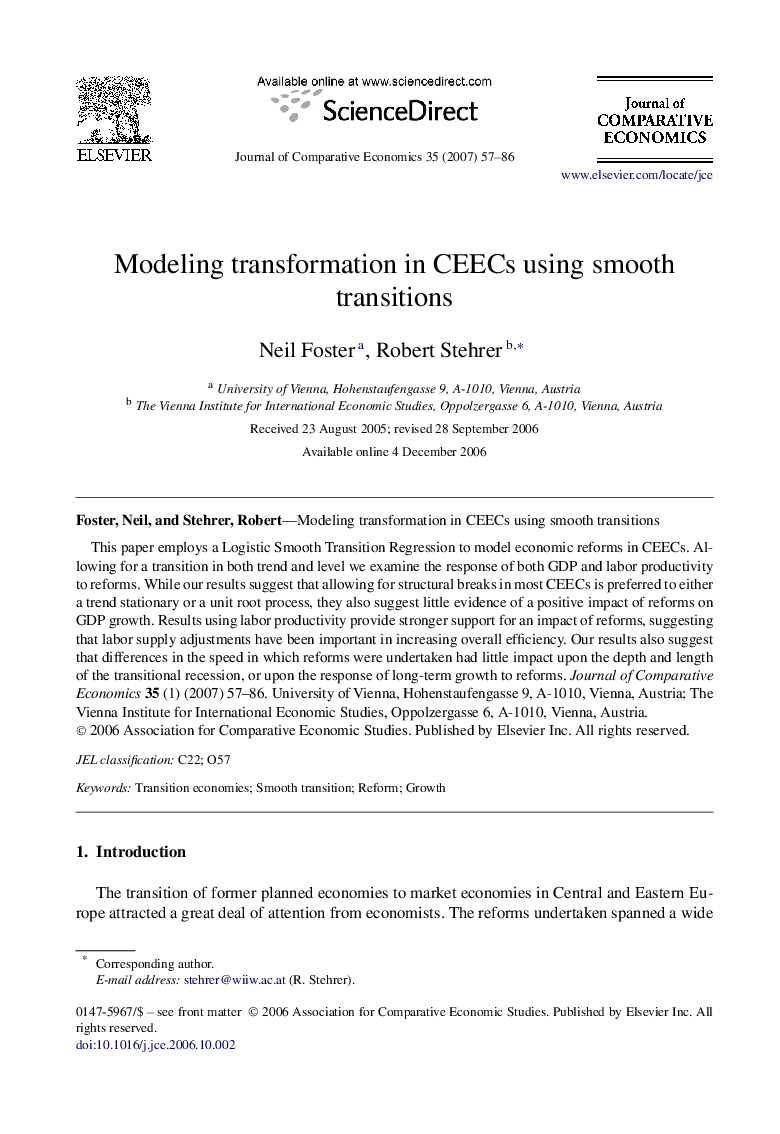| Article ID | Journal | Published Year | Pages | File Type |
|---|---|---|---|---|
| 5092570 | Journal of Comparative Economics | 2007 | 30 Pages |
This paper employs a Logistic Smooth Transition Regression to model economic reforms in CEECs. Allowing for a transition in both trend and level we examine the response of both GDP and labor productivity to reforms. While our results suggest that allowing for structural breaks in most CEECs is preferred to either a trend stationary or a unit root process, they also suggest little evidence of a positive impact of reforms on GDP growth. Results using labor productivity provide stronger support for an impact of reforms, suggesting that labor supply adjustments have been important in increasing overall efficiency. Our results also suggest that differences in the speed in which reforms were undertaken had little impact upon the depth and length of the transitional recession, or upon the response of long-term growth to reforms. Journal of Comparative Economics 35 (1) (2007) 57-86.
